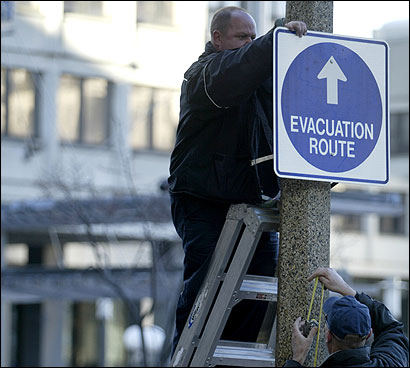North Shore
Active Member
- Joined
- Aug 19, 2014
- Messages
- 245
- Reaction score
- 278
Comm Ave already has 10' lanes.
The liability issue is bunk. If that were true, then we would sue engineers for building high speed roadways in our cities that directly result in people getting killed.
I'll be less charitable than Shepard. We know very well about the traffic engineering religion around here. You're not going to dazzle us by citing AASHTO or ITE. That's why I have no compunction about challenging you on this. We know that there is no scientific basis for many of the so-called axioms of the traffic engineering field. In fact, there's quite a bit of evidence marshaled against your regulations, evidence that Jeff Speck presented, but you seem to have ignored in your zeal to make a point.
That's why people like me are challenging traffic engineers. You create these rules and regulations that you claim make things safer, but are unsafe in fact. Motorists get to go fast, pedestrians and bicyclists pay the price in blood. Enough's enough.
Wow.
Why don't you just take up your anti-car beef with the direct descendants of Gottlieb Daimler?
Seriously. We have standards to which we are held in designing. Someone had to come up with them originally and they evolved over the years. 20 years ago no one gave a damn about bicycle accommodation around here. Now we have the complete streets program. I myself have worked on two separate projects in municipalities north of Boston where we've reconstructed over three miles substandard roadways to accommodate both an 11' wide vehicle travel lane along with a 5' bicycle lane on both sides of the road along with a 5' sidewalk in a primarily suburban setting. These projects have required a boatload of engineering to design retaining walls, utility relocation/replacement and easement acquisition, all while coordinating with hundreds of abutters to maintain access to their properties and keeping them involved in the design process.
We have to design with pedestrians and bicycles in mind nowadays. It's a non-starter otherwise. Change doesn't happen overnight, but it's moving faster than it ever has before. And while the dynamic hasn't inverted to the point you seeming hope it does where peds and bikes are the primary design concern, it sure as hell doesn't leave them hanging in the lurch like it used to.
So yeah, I get offended when you give your passion play for the blood of the fallen pedestrians (because no one dies in car accidents either) and turn up your nose at the idea of actually having tried and true tested guideline for which I am required to adhere to.
Oh, and the area by BU on Comm Ave. has 11' lanes. Just double checked.


 <--clicky for FHA details
<--clicky for FHA details